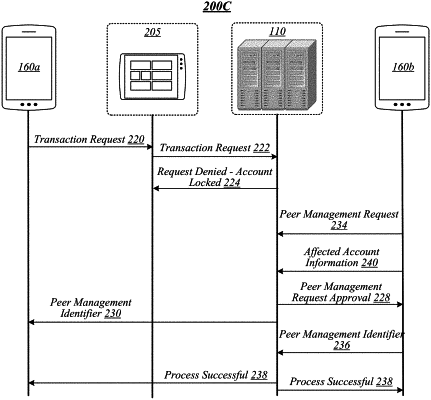| CPC H04L 63/0853 (2013.01) [G06Q 40/02 (2013.01); H04L 63/0892 (2013.01)] | 20 Claims |

|
1. A computing device, associated with a first user, comprising:
at least one input device;
a storage device storing instructions; and
at least one processor operative to, in response to executing the instructions:
present an indication that a first user account, of the first user, associated with a service provider has been locked, the first user account locked responsive to a safe authentication value being greater than a safe authentication threshold;
receive a peer management request to unlock the first user account via the at least one input device;
transmit the peer management request to a remote service provider computing device;
receive a peer management identifier from the remote service provider computing device, the peer management identifier configured to be shared with a second user associated with a second computing device; and
present an indication that the first user account has been unlocked responsive to the peer management identifier being provided to the remote service provider computing device via the second computing device associated with a second user account of the second user, the second user account being a predesignated safe authentication account with the service provider.
|